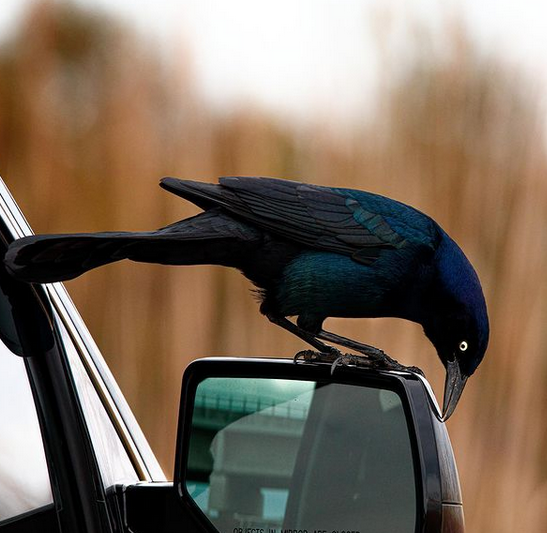Once we finished birding at the Pea Island Lifesaving Station in the Outer Banks of NC, I said goodbye to my guests and made my way across the short dune path to the parking lot.
Arriving at my truck, I was just about to pack up my camera when this Boat tailed Grackle flew in and landed on the mirror of the SUV across the way.

I couldn’t believe how close he was and was delighted to finally get some clean photos of this handsome bird in decent light.
He was quite curious about the vehicle that he was standing on and kept pecking at the glass and metal.
Better still, every few minutes he’d puff out his feathers and call out loudly to an unseen companion in the reeds nearby.




After spending a few minutes with the first bird, I drove up to Jeannette’s Pier and was greeted with the sight of a whole flock of Grackles perched on the railing.
The neat thing about these pics is that the birds shown here were quite tolerant of my presence on the pier allowing me once again to capture some nice portraits of their faces at a relatively close range.


Boat tailed Grackles are a permanent resident of North Carolina boasting a wide range that stretches from the coastline of New York, down into Florida and into east Texas.
They are found almost always near sources of water such as wetlands and coastal marshes, waterfowl impoundments, lakes, rivers, both the Atlantic and Gulf beaches, ponds and mudflats.
These sharp looking members of the blackbird family are omnivorous with a diet of expected coastal fare that consists of mussels, shrimp, frogs, aquatic insects, snails, crayfish, and even crabs.
When grabbing a meal away from the water, they will feed on grasshoppers, caterpillars, and the eggs of other birds.
During the winter months, they will supplement their diet with different kinds of seeds and grain to make up for the protein loss that may occur when their favorite prey becomes scarce in cold weather. This is why you’re likely to see more of them at your feeders in the wintertime if you live on the east coast.
Photos by @sally_siko of @birdwatching_nc
